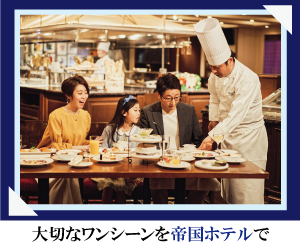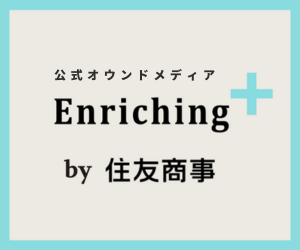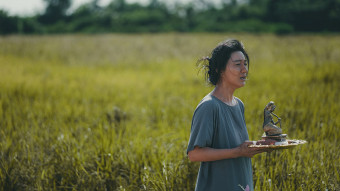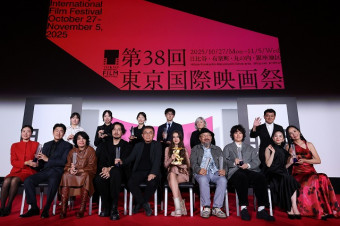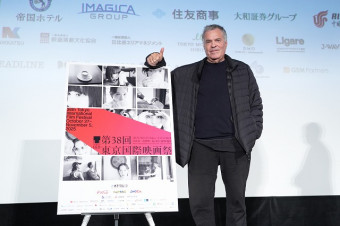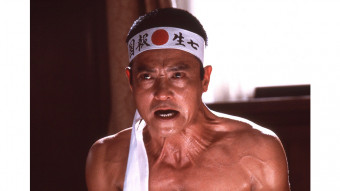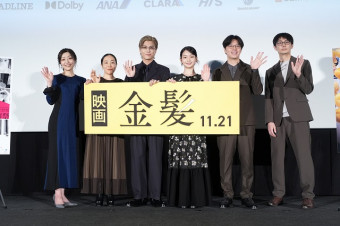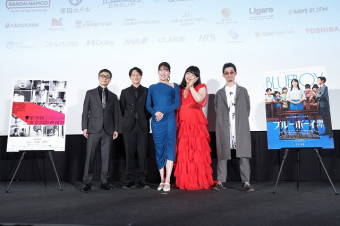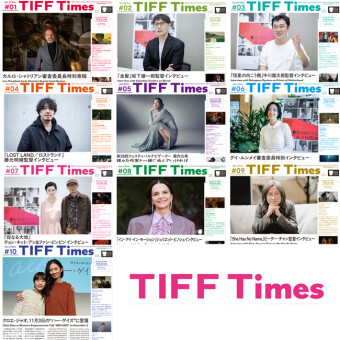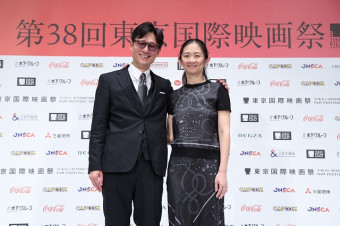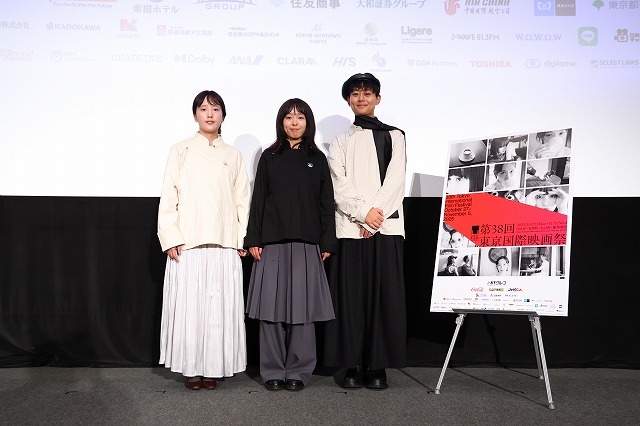
The first audience member to engage with the guests who appeared with the film Linka Linka on November 3, following its world premiere in the 38th Tokyo International Film Festival’s Asian Future section, mentioned that people in Japan were probably surprised about its depiction of Tibet. The director, Kangdrun, making her feature film debut, seemed to anticipate such a reaction.
“I depicted Lhasa [the capital of the Tibet Autonomous Region in China] as I see it today,” she said. “I wanted to show it exactly as it is, and to someone who has never been to Tibet, they may only think of the mountains and the steppes, but Lhasa is like any other city, and it has lots of young people.”
“The actors here with me on stage went through a similar experience as the characters they play. After graduating from elementary school, they went to schools in other parts of China, and came back to Tibet for vacation. During the time they were away, Tibet underwent lots of changes, and it’s something that’s difficult to get used to. That is what I wanted to show.”
So instead of the soaring alpine vistas and wide open plateaus of more well-known Tibetan movies by the likes of the late Pema Tseden (whose Snow Leopard won the 36th TIFF Grand Prix in 2023) and Sonthar Gyal, there are young folks dancing to EDM in Lhasa nightclubs and internet influencers hawking Tibetan traditional wares.
The film’s protagonist, Samgyi (Tsering Yangkyi), is a novice filmmaker working on her first feature, which is essentially about her own adolescence. Linka Linka—the term refers to a kind of traditional picnic—thus has a dual structure: Samgyi’s life as a 26-year-old artist struggling to make a movie in her hometown after living in Shanghai and Beijing since middle school; and her teenage days, sometimes depicted as scenes from the movie-in-progress and sometimes as memories that aren’t so clear. At the heart of the story is a lost wallet whose provenance figures significantly in the fate of Samgyi and her best childhood friend, Lhamo. Though the issue of what happens to the wallet destroys their friendship, years later each remembers the incident differently, thus casting doubt on the reliability of Samgyi as the director in terms of the story she’s trying to tell.
One viewer at the Q&A commented that the structure was “like a Chinese box,” and reminded him of Kurosawa Akira’s classic Rashomon. Picking up on the idea of Japanese cinema, Kangdrun said, “Before I studied film, I’d heard about Ozu (Yasujiro), and what interested me was how he addressed father-daughter relationships.” Samgyi’s relationship with her musician father is probably the most vital one in the film, because while he is proud of her intelligence and independence, as a parent he can’t help but be concerned by her choice of vocation, and tries to persuade her to channel her talents toward a job at a television station. This path was similar to Kangdrun’s own. “As an undergraduate I studied commercial filmmaking,” she said, “and in grad school I studied media production.”
Another audience member was curious about the actors who played the main characters at different times in their lives. It took Kangdrun several years to make the film, and so the younger actors naturally matured from elementary school to junior high school. “These actors also left Tibet to study on the mainland after elementary school, so they had no problem adapting to the story in real time.”
Tsering Yangkyi, who played Kangdrun’s alter ego on screen, revealed that she had never acted before. She was initially part of the production staff. “I was involved in the casting,” she said. “And the director couldn’t find any actor for the part of Samgyi she liked and thought I resembled the actor who played Samgyi as a child, so she asked me to do it. I was afraid I might ruin the project, but she was insistent, so I had no choice.”
The actor Ze Ren Dun Zhu, who plays Samgyi’s fashion-conscious pen pal Suoso, added, “It was also my first time acting, but I was already good friends with the director and followed a similar path: I left Lhasa to go to school in Shanghai and always wondered where I would end up in old age.”
Unlike his costar, he was perfectly comfortable in front of the camera. “I like being recorded,” he said. “And the character I played is, like me, a little eccentric, and he’s always writing letters to Samgyi, which is something I used to do with my friends back in Lhasa. Yes, I was confused by Shanghai at first, and I think the point of the film is to show how young people in Tibet are living right now. We still don’t know what the future will bring.”
Q&A Session: Asian Future
Linka Linka
Guests: Kangdrun (Director/Screenplay), Tsering Yangkyi (Actor), Ze Ren Dun Zhu (Actor)




















